In a world where data is king and storage space is as coveted as the last slice of pizza, cloud usage has become the superhero we never knew we needed. Gone are the days of lugging around external hard drives and praying they don’t crash. Now, businesses and individuals alike can access their files from anywhere—yes, even from that cozy corner of the couch where they binge-watch their favorite shows.
Table of Contents
ToggleOverview of Cloud Usage
Cloud usage has become essential in managing data in various sectors. Businesses increasingly adopt cloud-based solutions for scalable resources and enhanced team collaboration. Security features in cloud services often outperform traditional storage methods, which provides greater protection against data breaches.
Users gain immediate access to files through the internet, which eliminates the delays associated with physical data storage. Storage providers also implement robust backup options, reducing the risks of data loss. Companies report that the flexibility of cloud services allows for better response to fluctuating workloads.
Market analysis shows that 94% of enterprises rely on cloud services to increase efficiency and reduce costs. Various industries, including healthcare and finance, utilize cloud technology to enable secure data sharing and compliance with regulations. Furthermore, businesses benefit from the ability to integrate different applications seamlessly, enhancing their operational capabilities.
Surveys indicate that remote work has fueled the demand for cloud solutions. Employees can work effectively from any location, facilitating a more dynamic work environment. Subscription-based models of cloud services align with budget plans, helping organizations optimize expenses.
Adoption of multi-cloud strategies is on the rise, with many seeking diverse solutions to prevent vendor lock-in. Businesses can select specialized services that best meet their needs, fostering innovation and competitiveness in the marketplace. Projections suggest that global cloud computing revenue will reach $832.1 billion by 2025, signaling ongoing investment in cloud technologies.
Benefits of Cloud Usage

Cloud usage offers numerous advantages, making it essential for businesses and individuals alike. Key benefits include cost efficiency, scalability, and accessibility.
Cost Efficiency
Cost efficiency becomes apparent when organizations shift to cloud services. This model eliminates the need for heavy upfront investments in physical hardware. Subscription-based plans enable companies to pay only for the resources they use, minimizing waste. Over 94% of enterprises experience reduced operational costs due to cloud adoption, according to market analysis. Companies can reallocate funds toward innovation rather than maintaining IT infrastructure. Custom pricing models allow businesses to choose services that fit their financial requirements.
Scalability
Scalability stands out as another significant benefit of cloud usage. Cloud services enable seamless adjustments to meet changing demands. Whether companies experience peak periods or off-peak seasons, they can quickly scale resources up or down. This flexibility ensures that organizations remain efficient without overspending. Many businesses appreciate the ability to add or remove services based on their growth trajectories. Providers offer solutions that support both small startups and large enterprises, accommodating their diverse needs.
Accessibility
Accessibility plays a crucial role in the appeal of cloud services. Users can access files anytime, anywhere, as long as they have an internet connection. This feature supports collaboration among remote teams, as individuals can work on shared documents in real-time. It significantly improves productivity and facilitates consistent communication. With cloud platforms available across multiple devices, employees enjoy the freedom to manage their work from home or on the go. Enhanced accessibility leads to greater workforce satisfaction and operational efficiency.
Types of Cloud Services
Cloud services fall into three main categories, each offering distinct features suited for different organizational needs. Understanding these types helps in selecting the right solution.
Public Cloud
Public cloud services provide resources over the internet to multiple clients. Companies such as Amazon Web Services and Microsoft Azure dominate this market. Users benefit from shared infrastructure, which reduces costs while providing scalability. Security measures include data encryption and compliance protocols, addressing concerns about data protection. The convenience of on-demand access to computing resources empowers businesses to innovate quickly and respond to changing market demands effectively.
Private Cloud
Private cloud services offer dedicated resources for a single organization. Firms often choose this model for enhanced security and control over their data. Customizable to meet specific requirements, private clouds facilitate compliance with regulatory standards like HIPAA and PCI-DSS. Organizations gain reliable performance due to dedicated hardware. This model suits enterprises handling sensitive data or requiring high levels of customization.
Hybrid Cloud
Hybrid cloud combines public and private cloud environments, allowing for flexible resource management. Companies take advantage of both models, optimizing efficiency while maintaining high security. This approach allows firms to store sensitive data privately while leveraging public cloud resources for less critical workloads. Seamless integration between systems enables businesses to respond quickly to varying demands. Organizations benefit from the flexibility to scale resources as needed, ensuring effectiveness in managing workloads without overspending.
Challenges of Cloud Usage
Cloud usage presents several challenges that organizations must address to reap its full benefits. These challenges can significantly impact how businesses use cloud services effectively.
Security Concerns
Security issues pose a considerable risk for cloud users. Data breaches and cyberattacks remain common threats, given the storage of sensitive information on remote servers. Organizations depend on encryption and authentication measures to protect data. Despite these efforts, vulnerabilities in cloud infrastructure still exist. Consequently, businesses must continually assess their security protocols to prevent unauthorized access. Trusting a cloud provider’s security claims requires due diligence and thorough evaluations. Adopting strong password policies and multi-factor authentication enhances data protection significantly.
Compliance Issues
Compliance with regulations can complicate cloud usage. Various industries, such as healthcare and finance, must adhere to strict standards like HIPAA and PCI DSS. These regulations dictate how sensitive data is handled and stored, influencing cloud service choices. Selecting a cloud provider capable of meeting these compliance requirements is crucial. Non-compliance may lead to legal penalties and reputational damage for organizations. Therefore, businesses frequently consult legal experts to ensure adherence to regulations while using cloud services. Engaging in frequent audits provides additional assurance of compliance.
Downtime and Reliability
Downtime affects cloud services, impacting productivity and revenue. Users expect cloud providers to deliver high reliability and consistent uptime. However, outages occasionally occur, disrupting access to essential data and applications. Dependable providers typically offer service level agreements (SLAs) guaranteeing a minimum uptime percentage. When evaluating cloud services, organizations scrutinize these SLAs to understand potential downtime implications. Building robust disaster recovery plans mitigates the risks associated with downtime. Continuous monitoring of service performance aids in addressing reliability concerns proactively.
Future Trends in Cloud Usage
The landscape of cloud usage is rapidly evolving, influenced by technological advancements and changing business needs.
Increased Adoption of Multi-Cloud Strategies
Multi-cloud strategies are gaining popularity among organizations. This approach allows businesses to select specific services from various providers, optimizing functionality and cost-efficiency. Research indicates that 81% of enterprises use a multi-cloud strategy to enhance flexibility and avoid vendor lock-in. Enhanced customization empowers companies to create tailored solutions that meet unique demands, fostering innovation and increasing competitiveness. In turn, these strategies support better resource management, allowing for seamless scaling, agility, and improved performance.
Advances in Cloud Security
Cloud security is evolving to address emerging threats. Enhanced encryption methods and advanced authentication protocols offer greater protection against data breaches. Security features in cloud services now frequently exceed those found in traditional storage systems. Current practices involve integrating artificial intelligence and machine learning, enabling real-time threat detection and response. As organizations prioritize compliance, cloud providers are increasingly adopting industry regulations, ensuring clients meet required standards. According to research, effective security measures can reduce the risk of breaches by up to 50%, reinforcing trust in cloud solutions.
Evolution of Cloud Technologies
Cloud technologies are continually advancing in response to market demands. Significant innovations, such as serverless computing, facilitate streamlined application development by eliminating server management. Flexibility defines new offerings, enabling businesses to focus on core activities while cloud providers handle infrastructure. Furthermore, the integration of Internet of Things devices with cloud platforms enhances data collection, analysis, and processing capabilities. Analysts project that these trends will drive global cloud computing revenue to $832.1 billion by 2025, highlighting the substantial investment in these technologies. Organizations that embrace these advancements can expect enhanced efficiency and operational effectiveness.
Cloud usage has transformed the way individuals and organizations manage data in today’s fast-paced environment. With its myriad benefits such as cost efficiency scalability and accessibility businesses can adapt to changing demands while enhancing collaboration among teams. The shift towards multi-cloud strategies reflects a growing desire for flexibility and innovation allowing companies to choose tailored solutions that meet their specific needs.
As cloud services continue to evolve and improve security measures organizations that leverage these technologies are likely to gain a competitive edge. The future of cloud computing looks promising with advancements in areas like AI-driven security and serverless computing paving the way for enhanced operational effectiveness. Embracing cloud solutions isn’t just a trend; it’s becoming a necessity for those aiming to thrive in an increasingly digital landscape.



